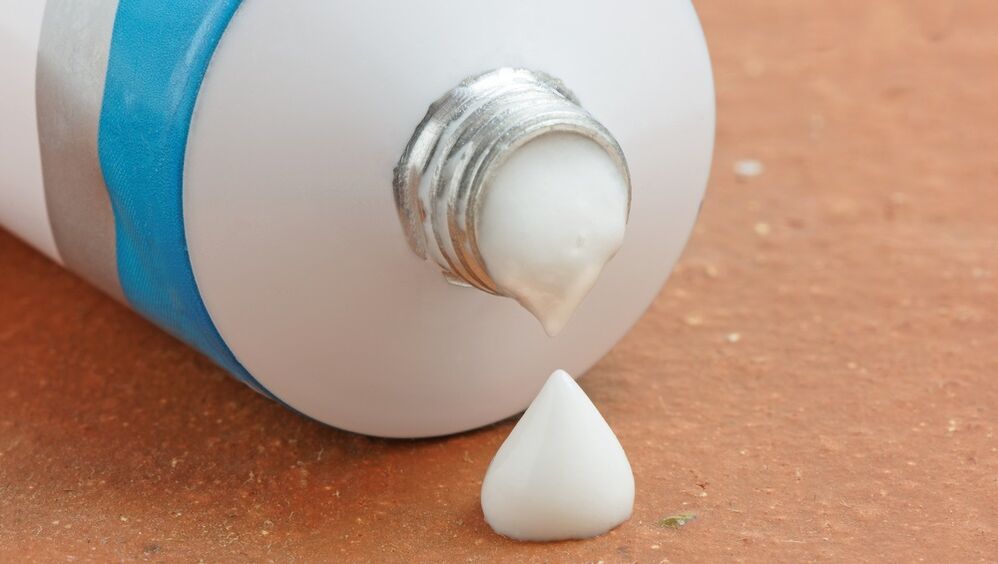Ointment from papillomas is a topical drug that has antiviral and anti-inflammatory effects. Some ointments for benign neoplasms have an unfavorable side effect profile. The effectiveness of drug therapy depends on the correct choice of drug.

General information about pathology
Genital papillomas are benign neoplasms caused by viral diseases of various etiologies. Often genital warts do not hurt. In a third of the victims, they disappear after a few months.
Sometimes small papules can cause itching, bleeding and pain during sex. Victims feel weak in their sexual lives. Many also consider genital warts to be an aesthetic problem. They are ashamed and want to get rid of them as soon as possible.
There are many ways to treat skin lesions. Therapy depends on which part of the body the genital warts are located. Another concern is the presence of other sexually transmitted diseases, such as fungal infections, genital herpes, HIV or chlamydia.
In case of enlargement of the vaginal mucosa or opening of the urethra, for example, treatment with trichloroacetic acid can kill warts. However, in straight warts, the doctor usually prescribes surgery.
No method guarantees that genital warts (Condylomata acuminata) will disappear forever. Because the immune system does not always completely eliminate the human papillomavirus that causes genital warts, STDs often return.
The doctor usually recognizes genital warts with the naked eye. He will examine the anus and genital area for changes in the skin and take a tissue sample, which is then examined under a microscope. It is more difficult to detect genital warts inside the body, such as in the rectum, vaginal mucosa, or urethra. Often a special examination is required - an examination of the vagina, rectum or urethra.
Once genital warts have been identified, the surgeon can either surgically remove the growths or freeze them with liquid nitrogen. Sometimes special creams and ointments are used. More rarely, when genital warts grow on the tongue or around the eyes, an ear, nose and throat (ENT) specialist or ophthalmologist can help.
The main features of preparations for papilloma
Salicylic acid preparations, which reduce the mass of warts due to their keratolytic effect and sometimes lead to healing with continuous use, are among the most common anti-wart drugs. Salicylic acid disrupts the intercellular connection of horn cells and thus resolves hyperkeratosis.
Salicylates can be widely absorbed through the skin and cause intoxication. Therefore, during pregnancy, infants and young children, as well as those with renal insufficiency, long-term treatment in large areas should be avoided. In addition, it prevents contact with the eyes and mucous membranes. The drug should not be applied to the genital area and face. Because the drug varies significantly in the concentration of salicylic acid
Cytostatics are used topically to treat warts to stop cell division. By inhibiting DNA and RNA synthesis, cytostatics prevent cell proliferation and, consequently, the spread of the virus.
Immunomodulators have been approved for the treatment of external genital warts and perianal warts in adults.
Tool Selection Criteria
When the immune system is able to kill viruses in the skin, benign growths usually slow down. However, if warts are present, the following treatment options may be considered:
- medicines;
- cryotherapy;
- surgical ablation.
Hygiene measures should be taken to prevent infection with human papillomaviruses - disinfection of hands and feet, for example, in swimming pools. Vaccines against 6, 11, 16 and 18 types of papillomavirus have been available since 2006. In addition to cervical cancer, papillomaviruses also cause external genital warts and vulvar skin lesions.
To reduce the risk of developing cervical cancer, the Robert Koch Institute's Standing Commission on Vaccination (STIKO) in its 2018 vaccination recommendation recommends that girls be vaccinated before their first sexual intercourse (9-14 years). There is also scientific evidence that vaccinating adult boys, who are common carriers of the virus, can help prevent the spread of cervical cancer.
There are other ointments (eg, oxolinic) that have not been shown to be clinically effective.
Salicylic ointment for papillomas is now rarely used because of its numerous side effects. There are several topical therapies for the treatment of external genital warts (Condylomata acuminata) and it is difficult to assess their effectiveness, as the success rates of research on individual procedures vary widely. Not everything can often prevent relapses and cause significant local concern. There is no standard therapy.
There are no clinical trials to compare with other treatment options. The use of tea extract is not recommended due to insufficient documentation, high spontaneous healing and significant side effects.
Topical antipapilloma drugs
Genital warts are caused by sexually transmitted human papillomaviruses, most commonly types 6 and 11. On the one hand, they heal on their own, on the other hand, they burden patients and very rarely turn into malignant tumors.
It is not recommended to take or use any remedy without consulting a doctor. The doctor will tell you which ointment is the best and most effective.
Contraindications and side effects
In rare cases, it can also cause skin sensitivity reactions. In case of hypersensitivity to methyl 4-hydroxybenzoate or propyl 4-hydroxybenzoate, the use of ointments should be completely avoided. The use of ointments during pregnancy or lactation is strictly prohibited.
Ointments can cause skin irritation, abrasion and irritation. These side effects are relatively common, but are not a cause for alarm. Ointments are also used in a 3-day cycle. After 3 days of use, four days after the skin is given a recovery period.























